Seeking Sasquatch In New Books
Posted by: Loren Coleman on June 27th, 2008
New Bigfoot / Sasquatch books will be making it into bookstores and online soon.
One is a revised, updated version of an earlier book by Robert Bartholomew and Paul Bartholomew on Eastern sightings of hairy unknown hominoids, newly entitled Bigfoot Encounters in New York & New England, published by Hancock House, 2008.
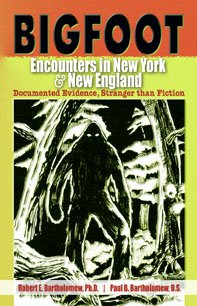
Chris Murphy’s expanded revised book overviewing Sasquatch should be out soon too. Know the Sasquatch/Bigfoot is Murphy’s sequel and update to Meet The Sasquatch.
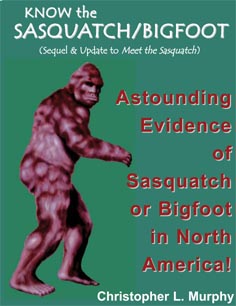
Chris sends along some thoughts he’s been having about Bigfoot lately:
“Footprints are an image of the bottom of a planted foot, that is why the toes look short. If people look at their own foot from the top, they will see that their toes are actually much longer. The attached image created by Yvon Leclerc at my request shows what a cast represents (the sole of the foot is an actual Patterson cast).”
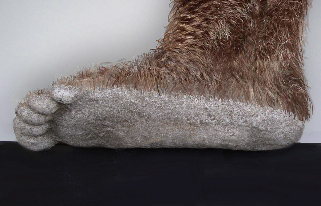
Murphy suggests that readers study one of their own feet from the top and then from the bottom. “Scientists take all this for granted,” says Murphy, “although Jeff Meldrum does point out that Sasquatch toes are quite long (MTS P. 135), but he does not go the extra step to explain why they appear short on casts.”

Continuing, Chris Murphy writes: “In preparing for a book soon to be published by Hancock House, I noticed something in images I had on file that might indicate further support for the authenticity of the Patterson/Gimlin film. The book is by Linda Coil-Suchy (temporary covers shown below). I was assembling some of the file photos for use in the book and noticed the distinct difference between the Laverty photos [see new inverted image above] of the footprints left by the creature at Bluff Creek (Patterson/Gimlin, 1967), and a photo [color cast below] of the Heryford cast (1982). It then struck me that the differences are likely because the Patterson/Gimlin creature was female, and the Heryford creature was male.”
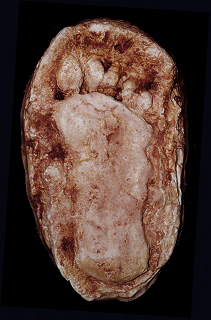
Although I don’t have Linda Coil-Suchy’s book available for review yet, I look forward to one promised section, mentioned on the back cover:
“For travelers, a guide to Bigfoot attractions in the West is a welcome addition.” (Late word is that “not previously published” has been edited off the back cover, seen here in an early draft.)
Five years ago, in Bigfoot! The True Story of Apes in America (NY: Simon and Schuster, 2003), I included “Appendix A: Twenty Best Places To See Bigfoot,” at the back of the book. In that traveler’s guide section of the book, I list and review the best “hot spots” for finding tracks, having a sighting, and also for discovering Bigfoot/Sasquatch “road signs, memorials, statues, museums, and gift shops.”
I understand Coil-Suchy’s giude is targeted to the West Coast and is supported with good photographs alongside her site descriptions.
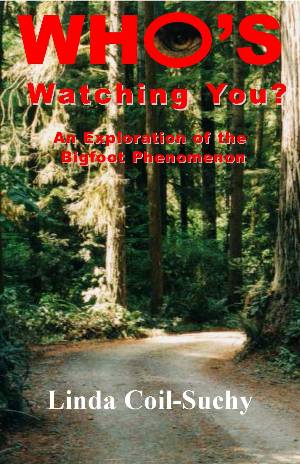
(Click on image to read full text of back cover.)
About Loren Coleman
Loren Coleman is one of the world’s leading cryptozoologists, some say “the” leading living cryptozoologist. Certainly, he is acknowledged as the current living American researcher and writer who has most popularized cryptozoology in the late 20th and early 21st centuries.
Starting his fieldwork and investigations in 1960, after traveling and trekking extensively in pursuit of cryptozoological mysteries, Coleman began writing to share his experiences in 1969. An honorary member of Ivan T. Sanderson’s Society for the Investigation of the Unexplained in the 1970s, Coleman has been bestowed with similar honorary memberships of the North Idaho College Cryptozoology Club in 1983, and in subsequent years, that of the British Columbia Scientific Cryptozoology Club, CryptoSafari International, and other international organizations. He was also a Life Member and Benefactor of the International Society of Cryptozoology (now-defunct).
Loren Coleman’s daily blog, as a member of the Cryptomundo Team, served as an ongoing avenue of communication for the ever-growing body of cryptozoo news from 2005 through 2013. He returned as an infrequent contributor beginning Halloween week of 2015.
Coleman is the founder in 2003, and current director of the International Cryptozoology Museum in Portland, Maine.

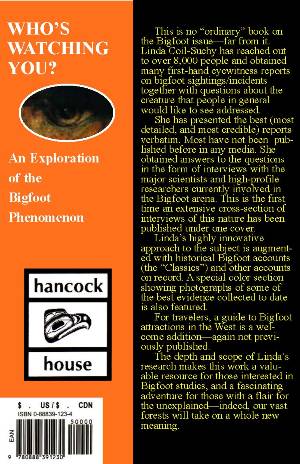









Regarding the apparent toe length effect, you can observe the same thing on your hand. The view from the palm side makes the fingers look shorter than they are, as seen when looking at the back of the hand.
[sigh]
Why do so many Bigfoot books (practically all) go for woo-woo THEY-are-watching-YOU bogeyman covers? (Even Meldrum’s did.)
Robert Alley and Myra Shackley. Loren Coleman. 😉 Now those are people who did good Bigfoot covers.
If it’s a biological reality, why dress it in paranormal clothes?
Just asking. Anyone have an answer?
If it’s “sell books,” well, one of the reasons I’ve got a teeny Bigfoot library (hint: don’t read books, read sighting reports) is that I don’t want stuff like that on my shelves. I want to look reasonably serious, you know?
If this is a serious topic, that can only be helped by a book cover that treats it seriously. Just my thought.
Thanks for keeping us updated.
As a side-note, I know you have everyone’s support regarding the museum.
Look like some pretty good books to me. You know the old saying,
” Never judge a book by it’s cover “
I’ll buy them all…
but where’s the “Hoopa Project”?
I am actually waiting for the draft book covers for The Hoopa Project by David Paulides before posting anything about it. A review copy would be even better, of course.
DWA–It’s the age old dilemma…crypto stuff is still seen in the “fringe” and as such, am guessing publishers and editors push for the ‘spooky’ book jacket to sell to the horror genre, and the younger audiences who still may not have made up their minds…
Wouldn’t get too worried about it…I agree with you, as long as it is in the “fringe” category, crypto is not going to be taken as seriously, but until we find the big furry boy or my water critter, people will always look at that stuff as fringe, out-there, and what not…just is what it is for good or ill…
Authors frequently have little input on the covers of their works. That is usually decided down in the advertising department.
I agree with Springheeledjack. It is the “fear” aspect that sells. Unfortunately.
In 1987, I wrote a book with the self-descriptive title, Suicide Clusters, about a topic that was not accepted as reality (at the time). Part of the proof that was undeniable later was in the historical record that I first dug out, going back to the 4th century B.C.
I began the first section of the book, my historical overview, with the following quotation that has some bearing on the comments above:
“It is fear that first brought gods into the world.” ~ Petronius, first century A.D.